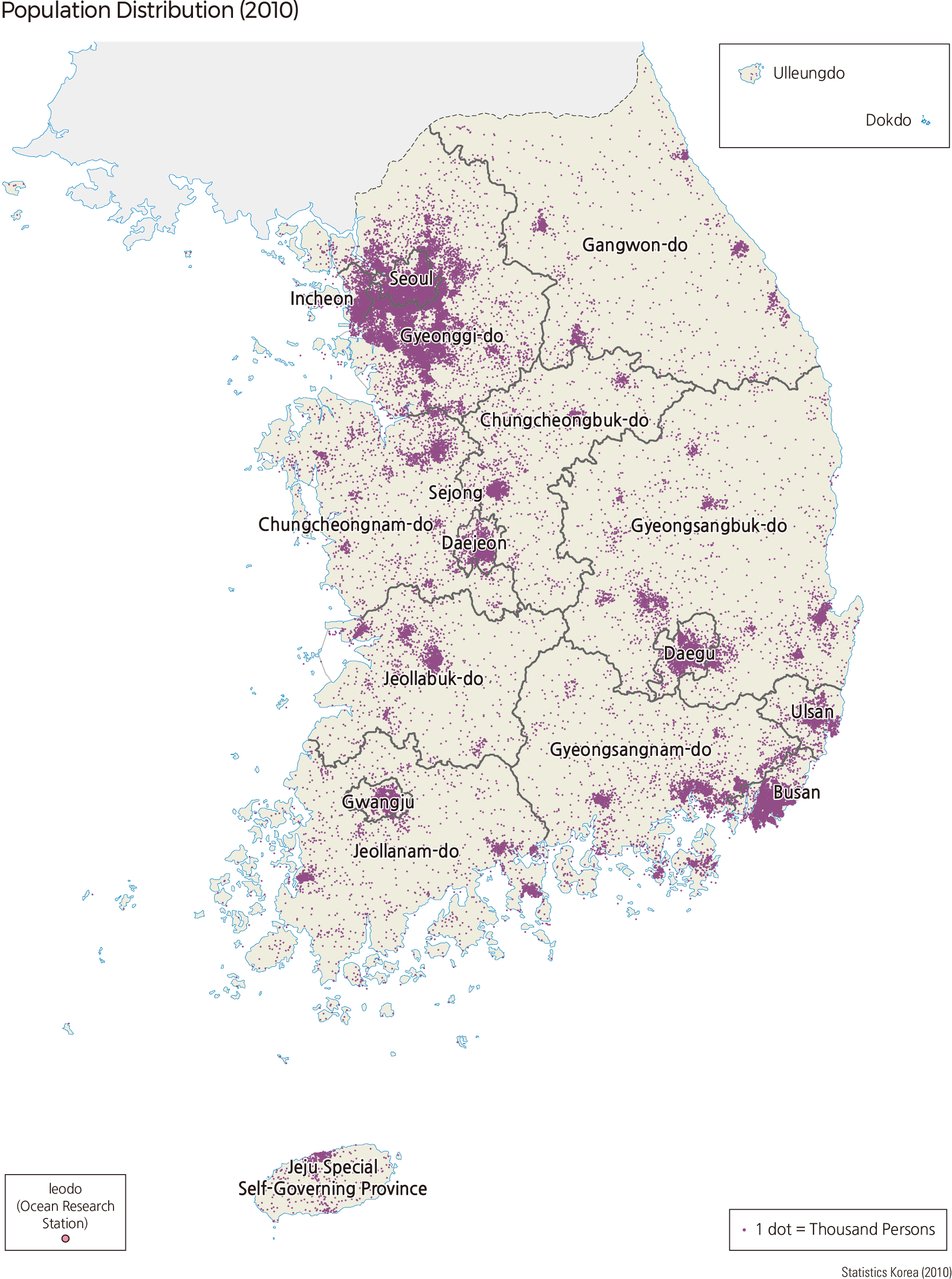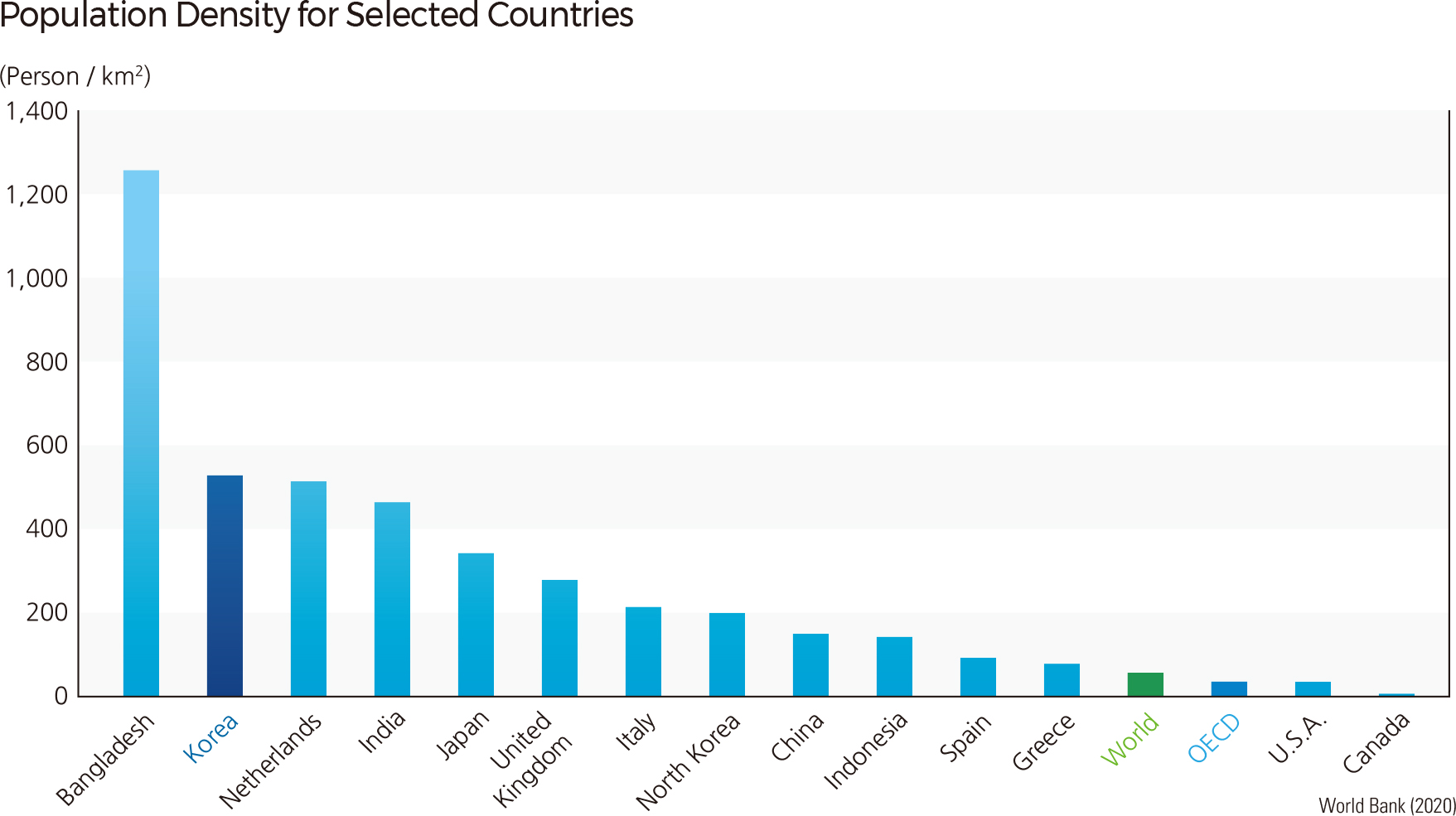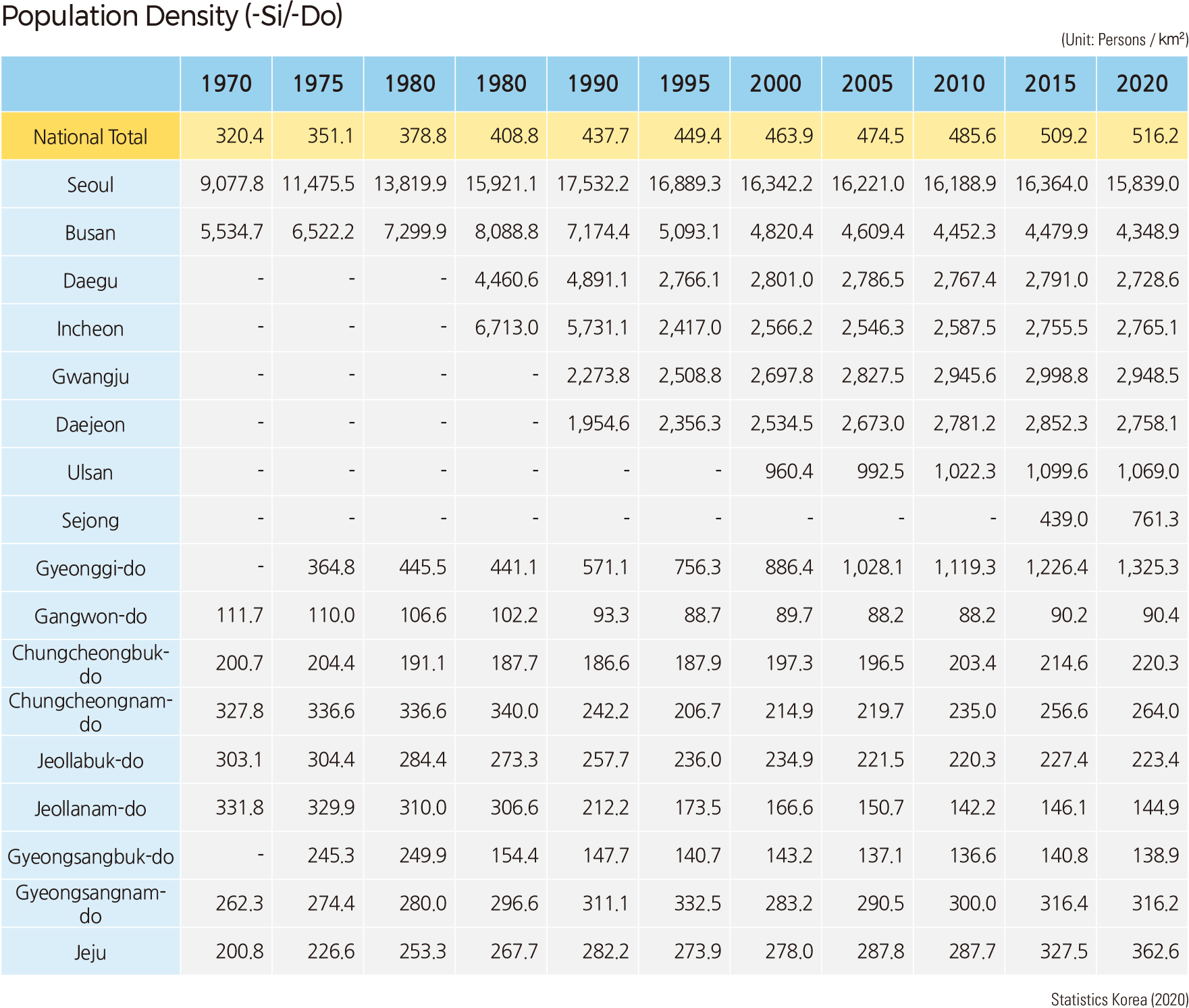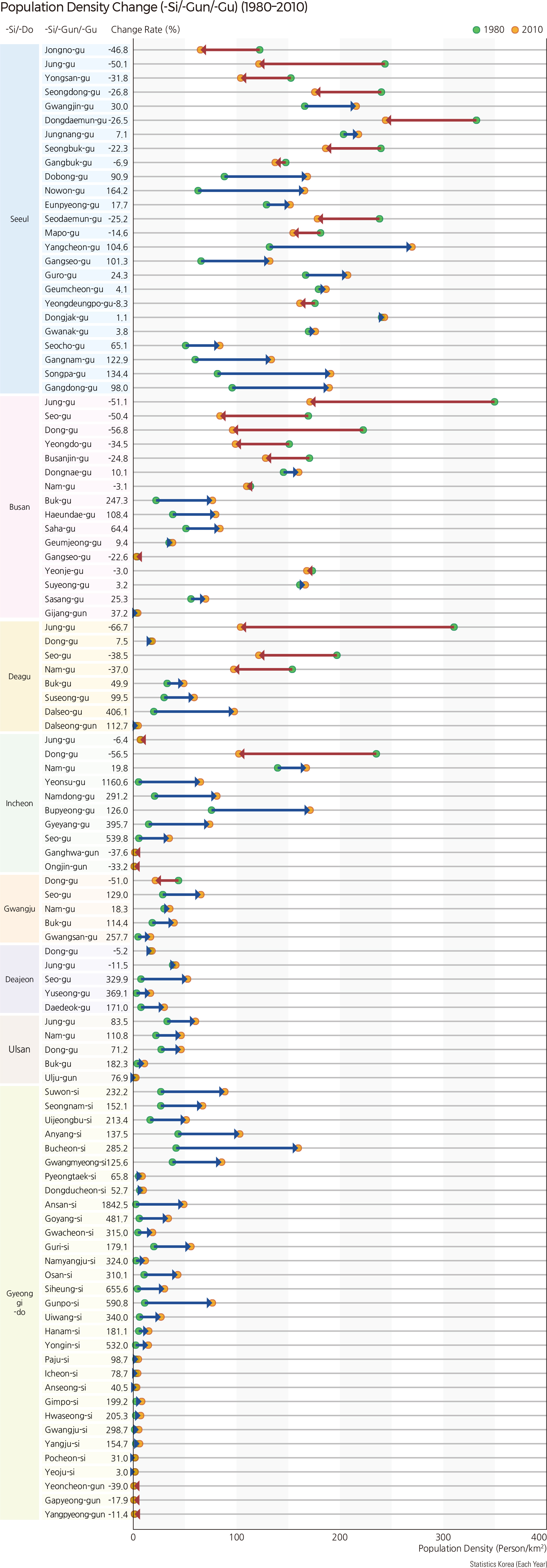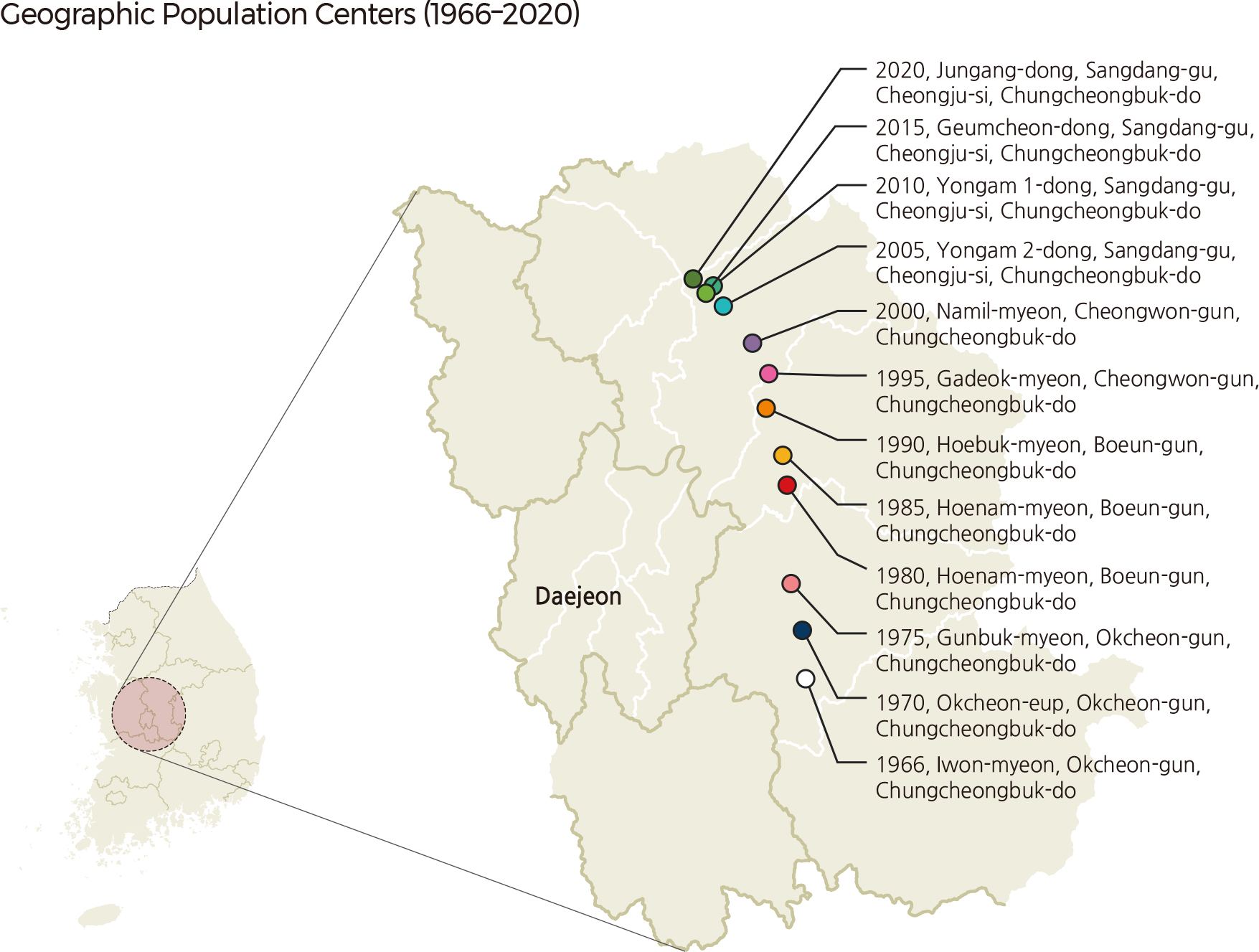English III 2021
Korea’s population density surged from 210 persons/km² in 1949 to 520 persons/km² in 2020, which was the highest in the world except for a few countries. The population density of the Seoul Metropolitan Area exceeds the nationwide population density, and the highest population density is observed in Seoul. On the other hand, the population density of Incheon considerably decreased between 1990 and 1995 when some areas in Gyeonggi-do, such as Ongjin-gun and Ganghwa-gun, were incorporated into Incheon. Over the past 30 years, from 1980 to 2010, the highest increase in the population density has been observed in Ansan-si, Gyeonggi-do, while the opposite is found in Sinan-gun, Jeollanam-do. The number of -si/-gun/-gu areas with increased population density was greater than the number of areas with decreased population density, and 50 percent of them are located in the Seoul Metropolitan Area. Gyeonggi-do is home to 42 percent of the 50 areas with a population density increase of more than 100 percent. Jeollanam-do was the province that had the largest number of -si/-gun/-gu areas that experienced decreased population density, followed by Gyeongsangnam-do and Gangwon-do. The concentration of population in the Seoul Metropolitan Area is also reflected in the changes in the geographic center of Korea’s population. The nationwide geographic center of the population is continuously moving toward the Seoul Metropolitan Area. |
